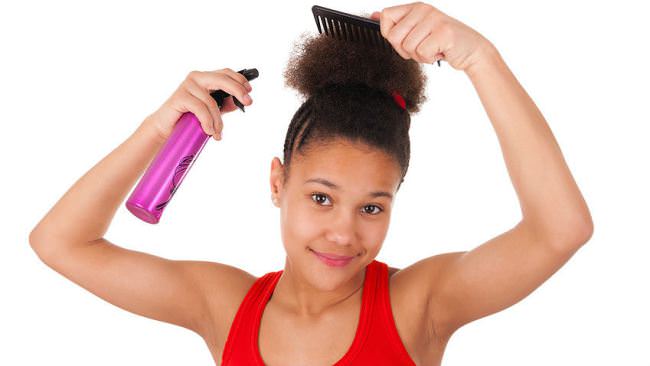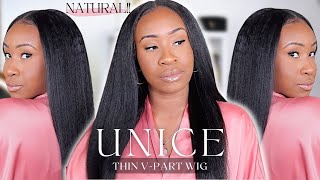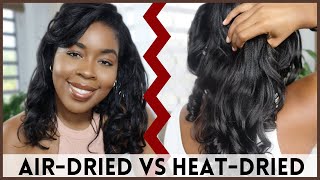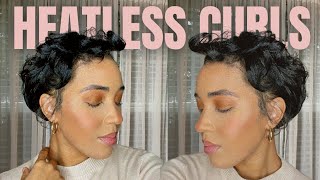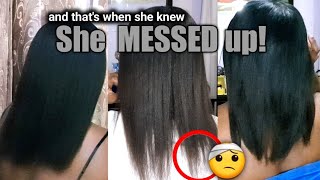Back To Basics: Moisture - Protein Balance
https://youtu.be/ytkai5c9kHE
What Is Moisture-Protein Balance, Why Is Important And How Do You Achieve It
I often talk about the moisture – protein balance but there are those out there who don’t know what it is or why it is vital to the health and length of your locks.
Lets start with moisture. Moisture is H20, water and nothing else. Moisture is probably the single most important factor in your hair’s health.
It’s surprising that hair is only about 10-14% moisture but you definitely notice when that percentage reduces because without moisture, whether your hair is natural or relaxed, you are in brillo pad city! Moisture improves elasticity so the hair is able to stretch before breaking. A very useful trait for those detangling and styling sessions.
Now protein on the other hand is a bit of a sly dog in that a deficiency doesn’t always present in an obvious way. Some people have ‘mushy’ or overly soft hair when it’s wet which is the classic symptom of protein deficiency in hair.
You may already know that chemicals break down the protein bonds in hair. What you may not know is that high heat or any other vigorous mechanical styling depletes protein in hair too. For this reason, chemically treated or heat damaged hair is automatically considered protein deficient as well.
The most obvious sign of an imbalance be it moisture or protein would be hair breakage. If you find little hairs on your shoulders or on the bathroom floor after styling your hair, you’ve got a problem with breakage. So how do you know if you are protein or moisture deficient?
Since the symptoms are similar for both deficiencies, the best advice I can give is that you should first err on the side of moisture. Correcting a moisture imbalance is easier than correcting an over-abundance of protein.
Black hair is very porous by nature. As such it takes up a lot of water but dries very quickly as well. If you have ever worn human hair extensions* and you wash them along with your own hair, you may notice that the weave hair will dry much slower than does your natural or relaxed hair.
This increased porosity is likely due to a combination of our hair’s natural makeup, ceramides and proteins lost during normal styling as well as the fact that in naturally curly hair, the cuticles never lie completely flat so moisture is lost very easily.
Moisture Imbalance
To correct a moisture imbalance begin by washing your hair thoroughly. Build up of oil or silicones in the hair prevents moisture from penetrating the whole shaft and as such a good clarifying shampoo* would be in order. Follow up by deep conditioning with a moisturizing conditioner* for at least 20 minutes.
Doing this under a hooded dryer or steamer would be best for maximum benefit. After rinsing, and while the hair is still damp, a leave in conditioner* can be applied before sealing with a good hair oil. It would be a good idea to avoid heat for a while so opt for some heat free styling techniques for the time being. Repeat the process in 3-7 days until the imbalance is corrected.
Protein Imbalance
Correcting a protein imbalance is similar with the added step of using a ‘hard’ or concentrated protein treatment like aphogee two step treatment or a homemade gelatine one to your hair first. Do this by following the instructions on the product you are using.
After the protein treatment, it is advisable to follow up with a moisturizing deep conditioning* treatment to avoid protein dryness. Again avoiding heat and excess styling for a while after your protein treatment would be a good idea.
Repeat with a super light protein conditioner in 3-7 days until the imbalance is corrected. Remember that you must leave a 6-8 week gap between ‘hard’ or concentrated protein treatments.
You Must Learn Your Own Hair
If you are experiencing breakage, knowing which imbalance is causing it is a skill that takes time and patience. As you practice by deep conditioning* your hair often, you will come to know your own hair and sidestep problems before they occur.
As a starting point, when you are grooming your hair in the evening in preparation for bed, finger detangle or comb you hair with a wide tooth comb* over the sink so that you can see all the broken hairs. Ignoring all the long shed hairs, count just the short broken ones.
The following day moisturize and seal your ends with either water and oil or a good hair moisturizer before repeating the combing process over the sink again. Count the short hairs again, if the number of hairs reduces from the previous day then you know that your hair needs more moisture. If there is no improvement or it gets worse, then you may be dealing with weak hair caused by a protein imbalance.
How Much Is Too Much Breakage?
This will be most relevant to naturals who wear their hair straight or those who are relaxed AND comb their hair daily. A good way to assess what your breakage means would be the following:
0-5 – Not too bad. Alternate between light protein and moisturizing conditioners to maintain the balance.
5-10 – An imbalance may be starting so this is your opportunity to fix it.
Over 10 – You may be approaching chronic breakage, do something about it now!
Aim to be in the 0-5 broken hairs category!
If you wear your hair curly and only comb your hair once a week or less often then figure out your baseline breakage during your normal routine and aim to lower this number with each passing wash day.
Unfortunately, chronic breakage is not always something that can be fixed, particularly if it is caused by chemicals. If this is what you are experiencing then in spite of moisture and protein treatments then all you can do is be patient and keep the hair already on your head long enough to allow new stronger hair to grow. As the new stronger hair grows and is well cared for, you can trim the damaged hair bit by bit and you will begin to see a huge improvement in the health of your hair.
If you are relaxed then you may want to reconsider how you use your chemical as chronic breakage is a sign of over-processing in relaxed hair. Perhaps you could use a weaker formula, reduce your processing time or avoid getting the chemical on previously processed hair.
Naturals who experience chronic breakage tend to be overdoing the heat usage or style their hair too often, so take a step back with some protective styling and a pampering regimen to correct the imbalance. Again not all damaged hair can be saved so bear in mind that you may have to trim badly damaged hair off eventually.
Before I got into haircare, I never really noticed the little short hairs in my brush or my bathroom sink, all I noticed was that my hair never seemed to grow. However when I finally paid attention, I was devastated to see that I was experiencing chronic breakage caused by overprocessing my relaxer.
I opted to go natural and start a good hair regimen and the rest as they say, is history. Of course, there is no need to do what I did, you can absolutely have healthy and long relaxed hair. You just have to make the effort and start caring for your hair today.
See the other articles in the back to basics series here >>

